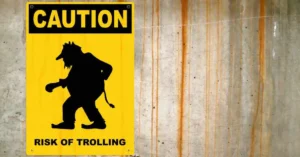Picture the word ‘Trademark’, what exactly appears on your mind? Typically, you’d be picturing images, writings, colors, etc. A visual existence that can be seen and used by the Trademark’s owner to market their product.
However, in reality, there are times when people or companies wish to register sound or audio as their Trademark, to represent the identity of their product. The sound or audio doesn’t have to be long, it can be short. For example, the audio used by Tokopedia and McDonald’s, we hear it from smartphone notifications, radio advertisements, or other electronic media.
It is known that the Trademark Law in the United States already regulates Sound Trademark. Therefore, there are already several Sound Trademarks registered with the United States Patent and Trademark Office (USPTO), the Trademark and patent registration agency in the US. Some examples of registered Sound Trademark include the roar of a lion for MGM films, the bell sound for NBC, the intro song for 20th Century Fox, and so on.
Now, how does it work in Indonesia? Does Sound Trademark legally exist here? Let’s discuss.
Traditional and Non-traditional Trademark
Traditional Trademark is, among the two, the more known and commonly used by the general public. What exactly is traditional Trademark? It’s a form of Trademark which has been protected since before the release of Law Number 20 of 2016 concerning Trademark and Geographical Indications. More specifically, images, names, words, letters, numbers, color arrangements, or a combination of these elements that have distinguishing features and are used in goods or services trade activities.
The development emerged when Law Number 20 of 2016 was passed, containing several forms of unique Trademarks. These Trademarks fall under the umbrella of the ‘Non-Traditional Brand’ category. The development is clearly seen in Article 1 point 1 of Law Number 20 of 2016, which reads:
“Trademark is a sign that can be displayed graphically in the form of an image, logo, name, word, letter, number, color arrangement, in the form of 2 (two) dimensions and/or 3 (three) dimensions, sound, hologram, or a combination of 2 (two) dimensions. two) or more of these elements to distinguish goods and/or services produced by persons or legal entities in trading goods and/or services.”
These changes are made to cover the legal vacuum for certain forms of Trademark, which in the end, can have a negative impact because it hinders the development of the innovation and trade industry.
Non-traditional Trademark consists of Holographic Trademark, 3 (three) Dimensional Trademark, and Sound Trademark. Several registered Trademarks in Indonesia are already included in one of the non-traditional Trademark categories. This shows that the Indonesian people not only welcome but also support the concept of non-traditional Trademark.
Law Number 20 of 2016 has undergone a few changes with the release of Law Number 11 of 2020 concerning Job Creation. However, there are no changes in the existence of Sound Trademark.
How Do We Register Our Sound Trademark?
Sound or audio is drastically different from visual or form, the commonly registered Trademark. So, how does one go about registering it?
Firstly, let’s examine the registered Sound Trademarks in the Intellectual Property Database, they are: Mamypoko, Hisamitsu, Mamypoko Pants Tetap Kering, Hyundai Sound and Citi. The owner of those Trademarks registered sound which can be tied to a product or even their company.
Secondly, let’s observe which part of the audio is registered by the Trademark owners. The method used by these owners is to register not just the audio itself, but the audio (as in the audio recording) and its notation. After the notation and recording have been received and checked without any problems or violations found, the audio will receive protection as a Trademark. The method of registering Sound Trademark has been regulated in Ministry of Law and Human Rights Regulation Number 67 of 2016 concerning Trademark Registration which has been amended by Ministry of Law and Human Rights Regulation Number 12 of 2021 in Article 3 paragraphs (5) and (6) which read:
“In the event that the Trademark as referred to in paragraph (2) letter e is in the form of sound, the attached Trademark label is in the form of a notation and a sound recording.”
“In the event that the Trademark as referred to in paragraph (2) letter e is in the form of sound which cannot be displayed in the form of notation, the Trademark label is attached in the form of a sonogram.”
Therefore, if by any chance the sound/audio cannot be displayed as notation, you can always replace notation with a sonogram.
Now, that is the method used to register your Sound Trademark for those interested. Every so often, Sound Trademark provides more benefits to Trademark owners than regular, visual-based Trademark does. It catches listeners’ and consumers’ attention as well as memory by using catchy tunes. If you have further questions or inquiries regarding this topic, do not hesitate to contact us via marketing@ambadar.co.id.
Source(s):
- Law Number 20 of 2016 concerning Trademark and Geographical Indication
- Ministry of Law and Human Rights Regulation Number 67 of 2016 concerning Trademark Registration
- Ministry of Law and Human Rights Regulation Number 12 of 2021 concerning Changes to Ministry of Law and Human Rights Regulation Number 67 of 2016






